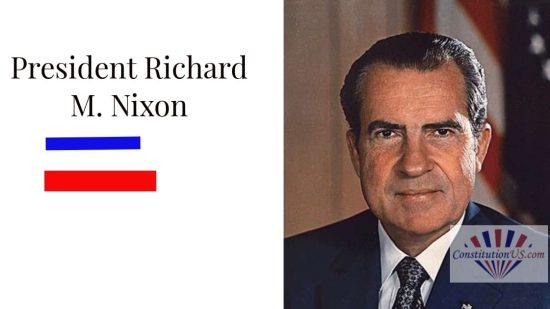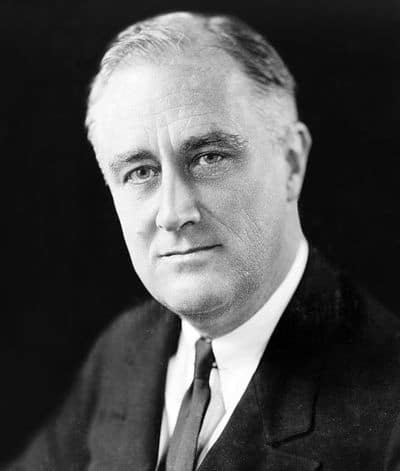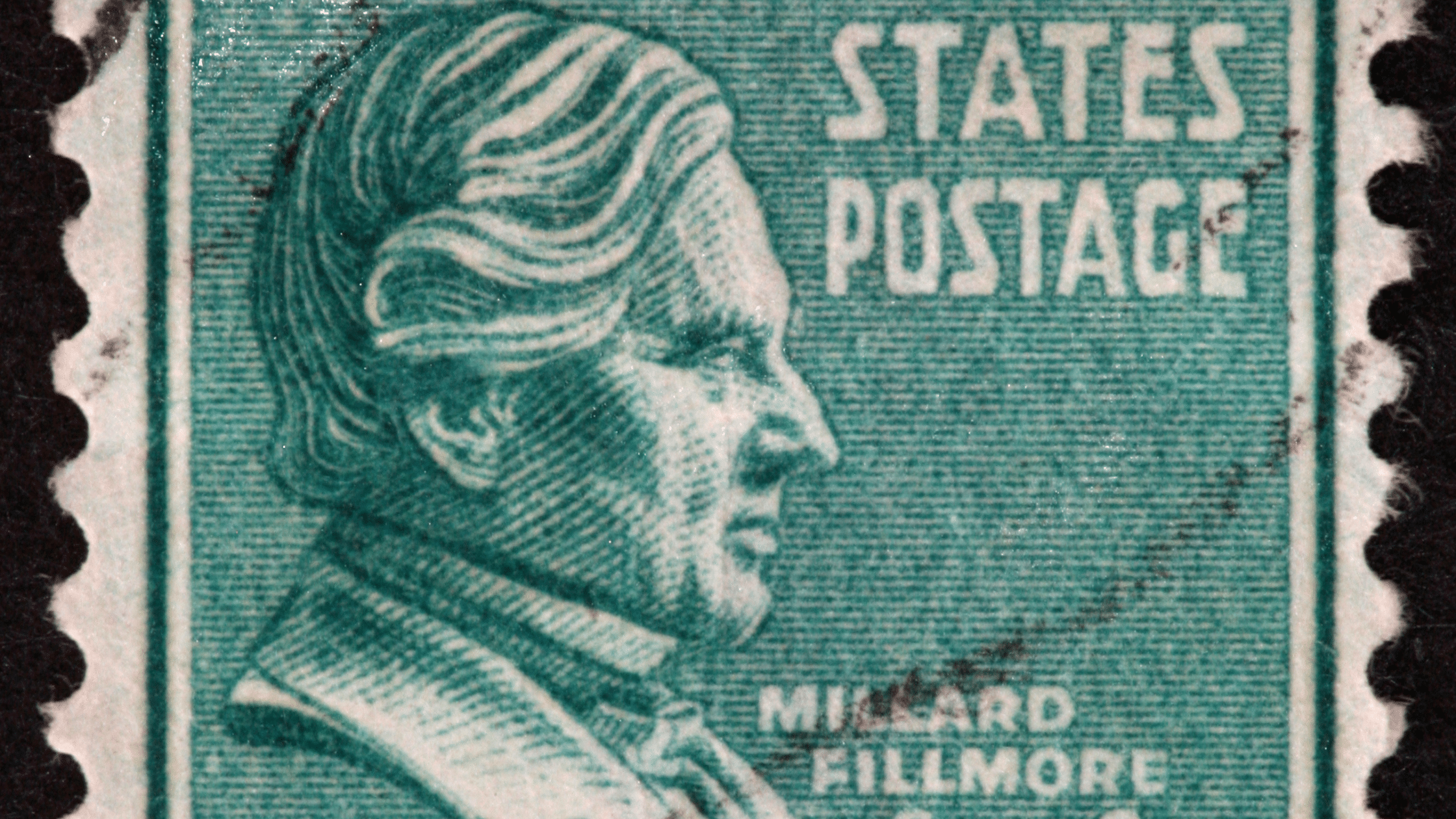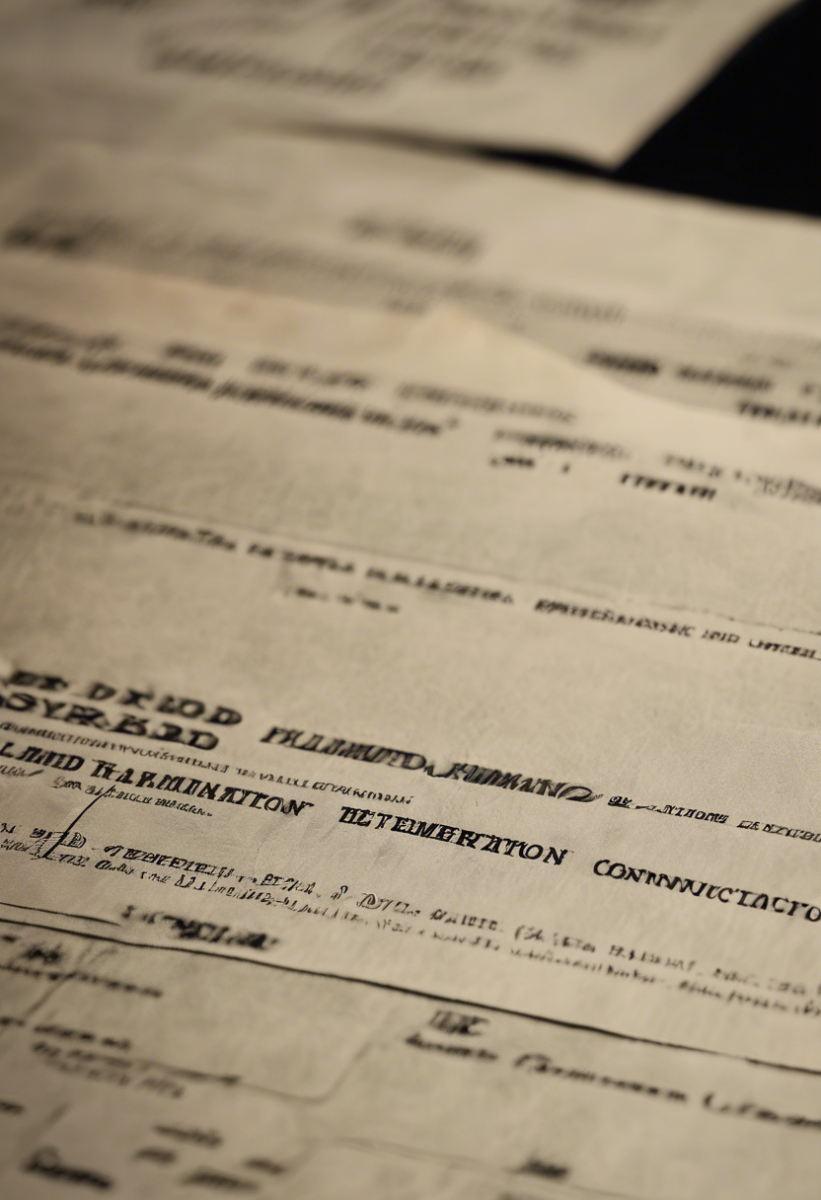Table of Contents
ToggleSources
- https://www.whitehouse.gov/about-the-white-house/presidents/richard-m-nixon/
The official White House website provides authoritative information on Nixon's presidency, including key events like the Watergate scandal and his resignation. - https://www.nixonlibrary.gov/
The Richard Nixon Presidential Library and Museum offers detailed historical records and exhibits on Nixon's life, presidency, and legacy, including Watergate and his policies. - https://www.history.com/topics/us-presidents/richard-m-nixon
History.com provides a comprehensive overview of Nixon's presidency, including his involvement in Watergate, Vietnam War policies, and environmental initiatives. - https://www.britannica.com/biography/Richard-Nixon
Encyclopaedia Britannica offers a well-researched biography of Nixon, covering his early life, political career, presidency, and post-presidential years. - https://www.epa.gov/history/origins-epa
The EPA's official website details the creation of the Environmental Protection Agency under Nixon, supporting claims about his environmental policies. - https://www.washingtonpost.com/history/2022/06/17/watergate-scandal-break-in-anniversary/
The Washington Post, which played a key role in uncovering the Watergate scandal, provides historical context and reporting on the event.
Key Points
- Richard M. Nixon was born in 1913 in Yorba Linda, California.
- Nixon served as U.S. president from 1969 to 1974, resigning due to the Watergate scandal.
- The Watergate scandal involved a break-in at the Democratic Party headquarters, leading to Nixon's impeachment and resignation.
- Nixon's resignation in 1974 was followed by a pardon from President Gerald Ford, shielding him from criminal charges.
- Nixon's presidency included controversial policies like the war on drugs and the Vietnam War, but also progressive actions like creating the EPA.
- Nixon's image was heavily influenced by media portrayals, including his poor performance in the 1960 televised debate against John F. Kennedy.
- Despite his scandals, Nixon made significant contributions, such as the National Cancer Act and efforts toward civil rights.
- Nixon died in 1994 at the age of 81 after suffering a stroke.
- His legacy remains polarizing, with ongoing debates about his impact on U.S. politics and culture.
- Nixon's life and presidency continue to be a subject of fascination in popular media and historical analysis.
Summary
Richard M. Nixon, the 37th U.S. president (1969–1974), is best remembered for the Watergate scandal, which led to his resignation in 1974 after impeachment proceedings began. Despite his controversial legacy, Nixon also implemented significant policies, such as creating the EPA and advancing civil rights, though his presidency remains overshadowed by scandal and public distrust. His complex legacy continues to spark debate in both historical and popular culture contexts.
When was Richard M. Nixon born?
Richard M. Nixon was born in 1913.
Where was Richard M. Nixon born?
Richard M. Nixon was born in Yorba Linda, California.
How old was Richard M. Nixon when he became president?
Richard M. Nixon was elected at the age of 56.
What years was Richard M. Nixon president?
Richard M. Nixon was president from 1969 – 1974.
When did Richard M. Nixon die?
Richard M. Nixon died at the age of 81 in 1994.
How did Richard M. Nixon die?
He died of a stroke.
When talking about the life and presidency of Richard Nixon, we could go through the years in a traditional, chronological order.
However, the most interesting and infamous part of the story is the end, not the beginning. Nixon will always be remembered for the Watergate scandal, impeachment, and resignation while insisting, “I am not a crook.”
Richard M. Nixon and the Watergate Scandal
The term Watergate has taken on its own meaning in the years following the original Watergate scandal. Any disastrous turn of events in a president’s career is considered their personal “Watergate.” Even the common suffix “-gate” for a scandal originates from Watergate.

On June 17th, 1972, five men broke into the headquarters of the Democratic Party at the Watergate complex in Washington, DC.

Get Smarter on US News, History, and the Constitution
Join the thousands of fellow patriots who rely on our 5-minute newsletter to stay informed on the key events and trends that shaped our nation's past and continue to shape its present.
Journalists from the Washington Post would take on the story and be soon informed by an anonymous source that there were links to the Nixon administration.
At the time, the White House tried to sweep the story under the rug. However, it was later revealed that there was a much bigger plot to sabotage the Democrats and that Nixon did know about it.
A total of 48 officials were convicted due to the investigations, and the spotlight again fell on Nixon.
Nixon’s Inevitable Impeachment
There was no doubt that President Nixon had acted unlawfully, whatever the extent of his involvement in the ordered sabotage and break-in. To make matters worse, he had misled the public and lied about events.
He would admit that he had misled the nation when he had been informed of the administration’s involvement in the situation. He called it a lapse of memory. Others called it deliberate deception.
It was clear that he would face impeachment for his action. The Senate and House Minority Leaders made it clear that he would not receive enough votes for an acquittal if this happened.
Nixon Resignation – Jumping Before He Was Pushed
Resignation was the only option for President Nixon at this point. Either he faced trial, lost, and would be stripped of his power and dignity, or he could go out on his terms.
He officially resigned on August 9th, 1974, via a television address from the Oval Office – another significant media appearance to go down in history. He stated that his resignation was for the good of the country.
He would leave the White House, and Vice President Gerald Ford would immediately take over the presidency.
Gerald Ford Pardons Nixon for His Actions
Richard Nixon was no longer the president and had escaped the risk of the impeachment process. However, there were still charges against him, and public opinion was at a new low.
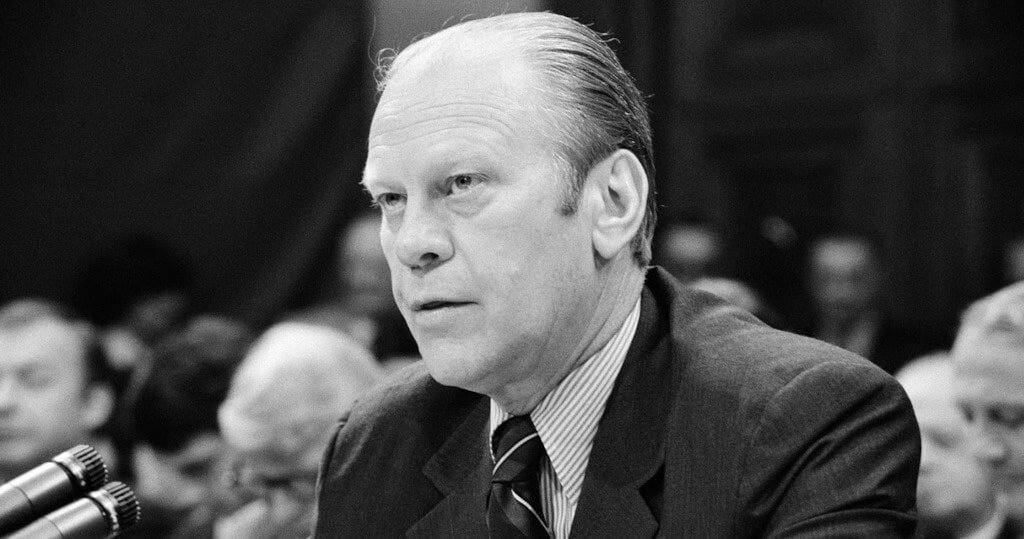
There was a strong desire to see him convicted for his role. President Ford did not pursue this and proposed a pardon for Richard M Nixon. This led to a negotiation process on the terms.
Nixon was initially reluctant because, accepting a pardon suggestion, he had committed a crime and remained adamant he had not. Ford had asked for a statement of contrition. Eventually, Nixon was granted a full pardon and protection from indictment.
Was Richard M. Nixon the Man the Media Continues To Portray Him As?
Naturally, there are lots of attempts to vilify President Richard Nixon and find other stories that support the idea that he was, in fact, a crook and a pretty awful president.
There is still much hatred for him, and the Watergate scandal remains in living memory in the United States, which makes it difficult for people to see a more balanced side of his presidency and life.
The story of Nixon wanting to kill a journalist
This story sounds incredible until you consider everything else around the cover-ups and schemes of the Watergate scandal.
There was a journalist called Jack Anderson that President Nixon loathed. When a major negative story broke, Anderson was often behind it. The Nixon administration had tried to stop him with threats and smears, but this didn’t work. So, plans were put in place to poison him.
Two conspirators would admit under oath to creating this plot under orders from a senior White House aide. Reports suggest that the order originally came from much higher up.
It isn’t hard to see why writers and creators are so keen to portray this idea of a tyrannical monster when there are stories like this.
On a more realistic level, there are aspects of President Richard M Nixon’s policies and actions in power that aren’t popular.
Nixon’s war on drugs
Many presidents across the modern era will declare some sort of action on the war on drugs. Most recently, it has been a war on opiates and concerns over dependencies on painkillers and prescription drugs.

Meanwhile, cannabis has been legalized – either recreationally or medicinally – in many states.
In 1971, it was a different story, with Nixon naming drug abuse “public enemy number one” and focusing on harsher measures on cannabis use.
Operation Intercept would then come into force to shut down border crossings and stop drugs from entering the country from Mexico.
Nixon and the Vietnam War
Nixon inherited the ongoing Vietnam War and was keen to see it end as soon as possible. The aim was to get American troops out of the region while allowing the South Vietnamese region some way of defending itself.
This alone would have been a popular decision as the nation grew tired of the conflict and didn’t want to see any more casualties. However, the way he went about this was questionable.
He proceeded to order the carpet bombing of North Vietnamese forces in Cambodia without consulting the leader of Cambodia. He advocated peace and the Paris Peace Accords, but this wasn’t signed until the beginning of 1973.
Nixon’s decision to scale back funding for NASA
This one isn’t that controversial or shocking compared to the war on drugs or the war with North Vietnam. However, the recent moon landing of 1969 was considered one of the greatest achievements of mankind and scientific discovery, let alone a major moment for the United States and its part in the space race.
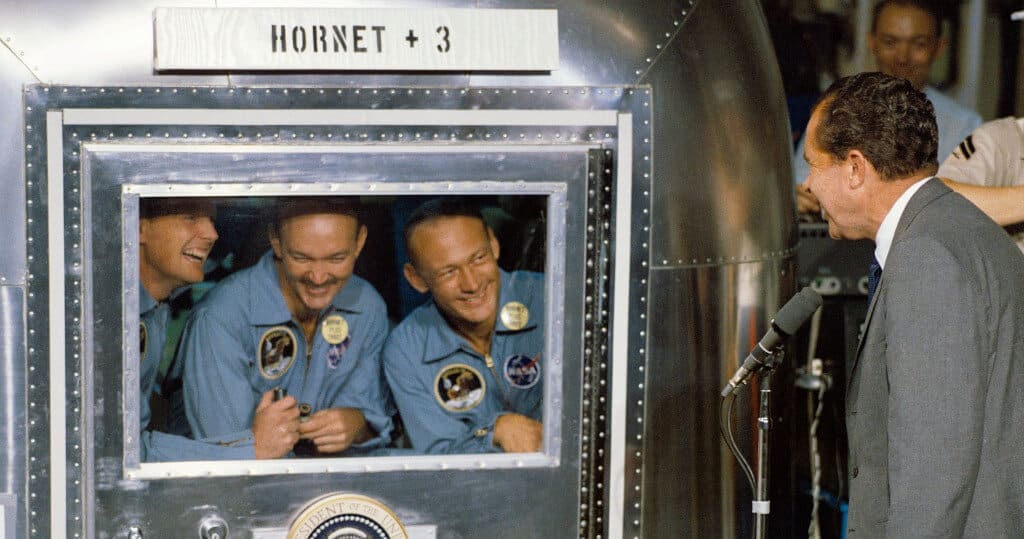
So, the decision to scale back NASA funding in 1970 was interesting, having previously gone to meet with the astronauts at their quarantine. Nixon wanted to scale back the projects. This included a plan for a crewed expedition to Mars planned for 1981.
Richard M. Nixon’s image in the media
Image is important for any presidential candidate in the modern era. As the face of a political party, they need to look strong and statesman-like in different situations. Some have mastered this with careful image manipulation and photo-ops, while others have struggled.
For example, Barack Obama tended to have a habit of looking cool, even when campaigning for Biden, while George W. Bush looked uncomfortable in a sympathetic way.
Richard Nixon started his journey to the presidency long before his election in 1968 with unsuccessful campaigns. The most notable moment of these was the decision to take on John F Kennedy during a televised debate.
Television debates are the norm now and are carefully staged. Back then, Nixon was ill-prepared for how sweaty and shifty he would look compared to the confident, youthful Kennedy. The impact on viewers was devastating.
“Head-in-a-jar” president
Of course, modern media continues to instill the idea that Nixon was perhaps the worst president ever.
There are still strong caricatures in popular culture. Younger generations will go on to watch the evil dictator “head-in-a-jar” president of the Earth in Futurama. While this is clearly a massive exaggeration of character – there is no smoke without fire.
Then there are those that add to our curiosity about the man behind the scandals. The Nixon interviews by David Frost in 1977 were an important way for Nixon to tell his story. The story of the interviews then became the subject of a feature film.
However, many aspects of his policies and approach would surprise those with progressive attitudes.
While it is easier to focus on the negatives, we still have to go beyond those final years in power and look at everything else that Richard Milhous Nixon was able to achieve. There are some policies and decisions that took place that many on the more liberal side of politics would agree with.
Nixon and the environment
Environmental issues are something that we might not associate with Nixon. However, he made a lot of important changes during his presidency. The most important of these is the creation of EPA – The Environmental Protection Agency.

It is noted that his domestic advisor was more knowledgeable on these subjects, suggesting that this was more about politics than personal interest.
Still, Nixon did go on to bring in the Clean Air Act of 1970 and was the first to mention environmental policy in his State of the Union address.
Nixon and equal rights
Again, the extent to which President Richard Nixon can be heralded as a champion of any form of equal rights is questionable. How much was a personal opinion, and how much was under the advice of those closest to him?
Regarding the African-American civil rights cause, Nixon would work on further desegregation of public schools and for a notion of African-American economic equity known as black capitalism.
There is also the fact that Nixon campaigned as an Equal Rights Amendment supporter before his election and appointed more women to the administration. Yet, he still faced criticism for lack of action within the legislation.
Nixon and the war on cancer
Then there was the war on cancer. Naturally, there wouldn’t be any president that would come out on the side of cancer. But comedic writers would probably say that if anyone was going to, it would be Nixon.
Instead, he launched the National Cancer Act of 1971 so that the Public Health Service Act was better equipped for the efforts to fight cancer across the nation.
Richard M. Nixon’s Impact in His Final Year
After Ford’s pardon, Nixon was free to live his life in retirement in comfort and with no fear of further criminal charges related to the scandal. Over time, he would work to improve his image and remain an important part of the Republican party.
Jimmy Carter would invite him to a state dinner in 1979, although Ronald Reagan did not invite him to his inauguration.
He gave interviews and authored books to cement his legacy. In January 1994, Nixon established the Center for the National Interest. This Washington, D.C., think tank was a non-partisan institution dealing with important political issues.
This grand venture was to be his last. Richard Milhous Nixon suffered a stroke in April 1994, which would progress to severe brain damage and finally a coma.

There was no full state funeral for the 37th president of the United States, although he had not wished to have one, even if it was a possibility.
That said, there was a chance for mourners to visit the body as it lay in state at the Richard Nixon Library before the funeral service. It is estimated that around 42,000 people lined up to do so.
Richard M. Nixon Will Live On in Popular Culture and History
It is impossible to tell how we will view Richard M. Nixon and his time in the Oval Office in another 50 years or if there will be any deeper compassion or hatred towards him when it comes time to mark the centenary of the Watergate scandal.

He may not be quite the divisive or extreme figure he was in the 20th century. After all, we have since had a president impeached twice.
Either way, there is no denying the impact that he had on the role of president, the direction of the nation at the time, and the portrayal of presidents in the media ever since.
President Richard M. Nixon Quiz
Frequently Asked Questions
When and where was Richard M. Nixon born?
What was the Watergate scandal and how did it impact Nixon's presidency?
What were some of Nixon's notable policies during his presidency?
How did Richard M. Nixon die?
What was Nixon's role in the Vietnam War?
How useful was this post?
Click on a star to rate it!
Average rating / 5. Vote count:
No votes so far! Be the first to rate this post.
We are sorry that this post was not useful for you!
Let us improve this post!
Tell us how we can improve this post?
